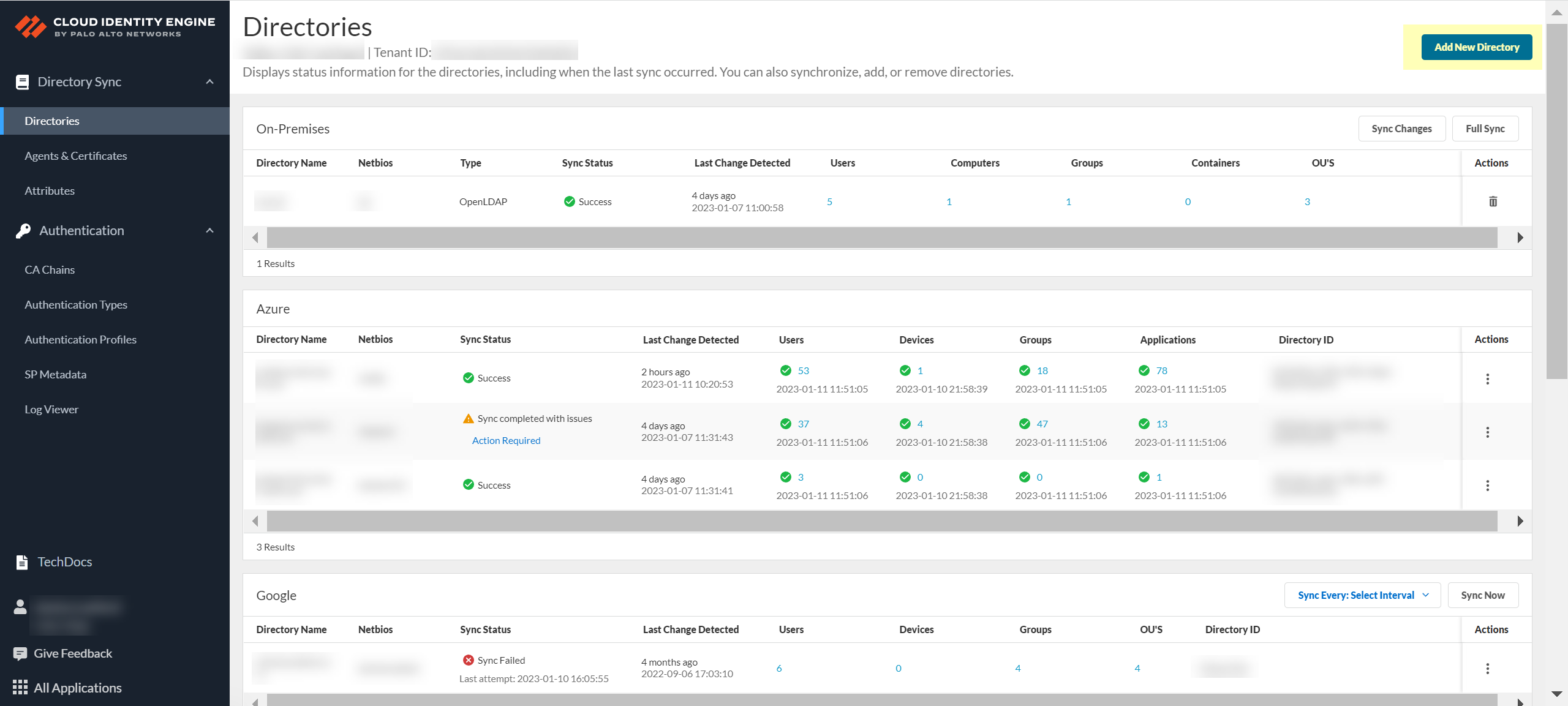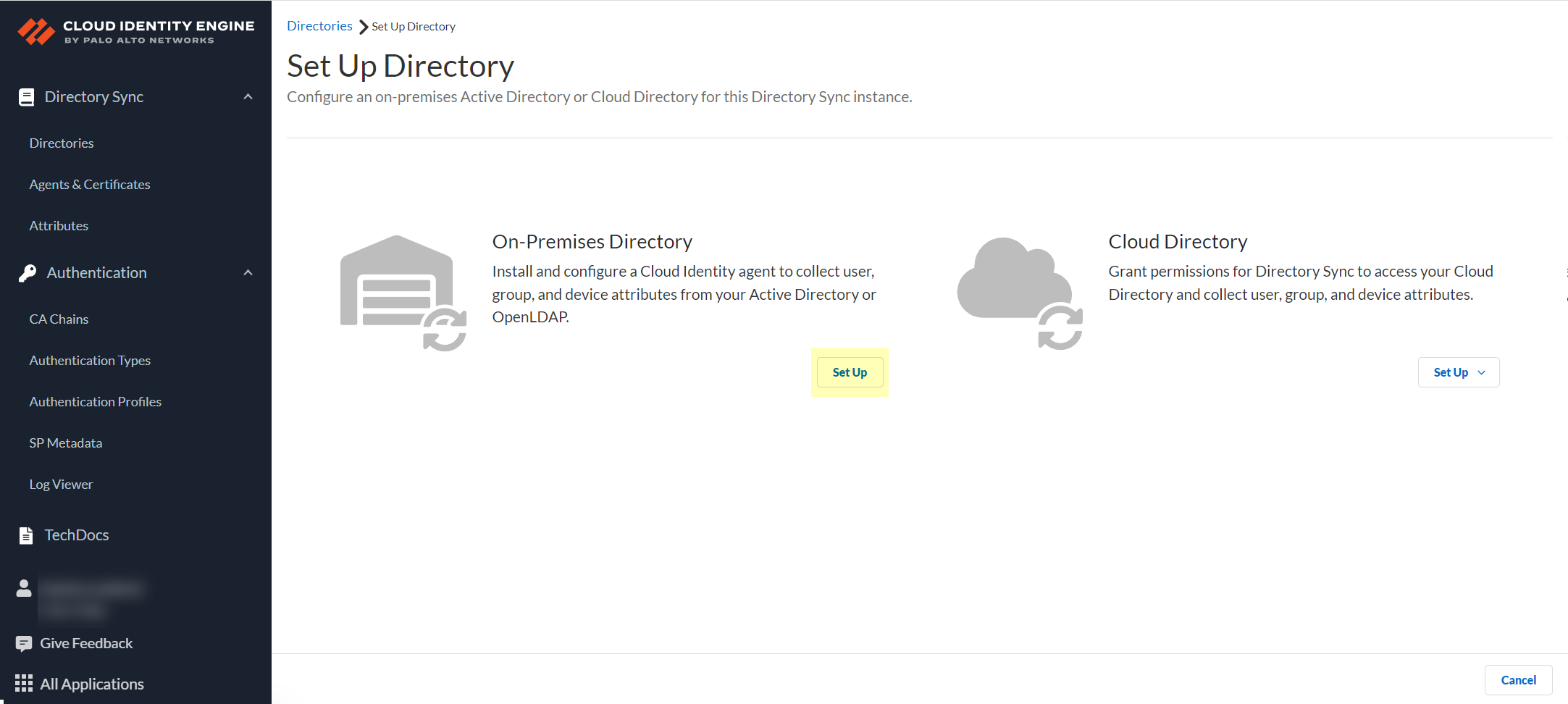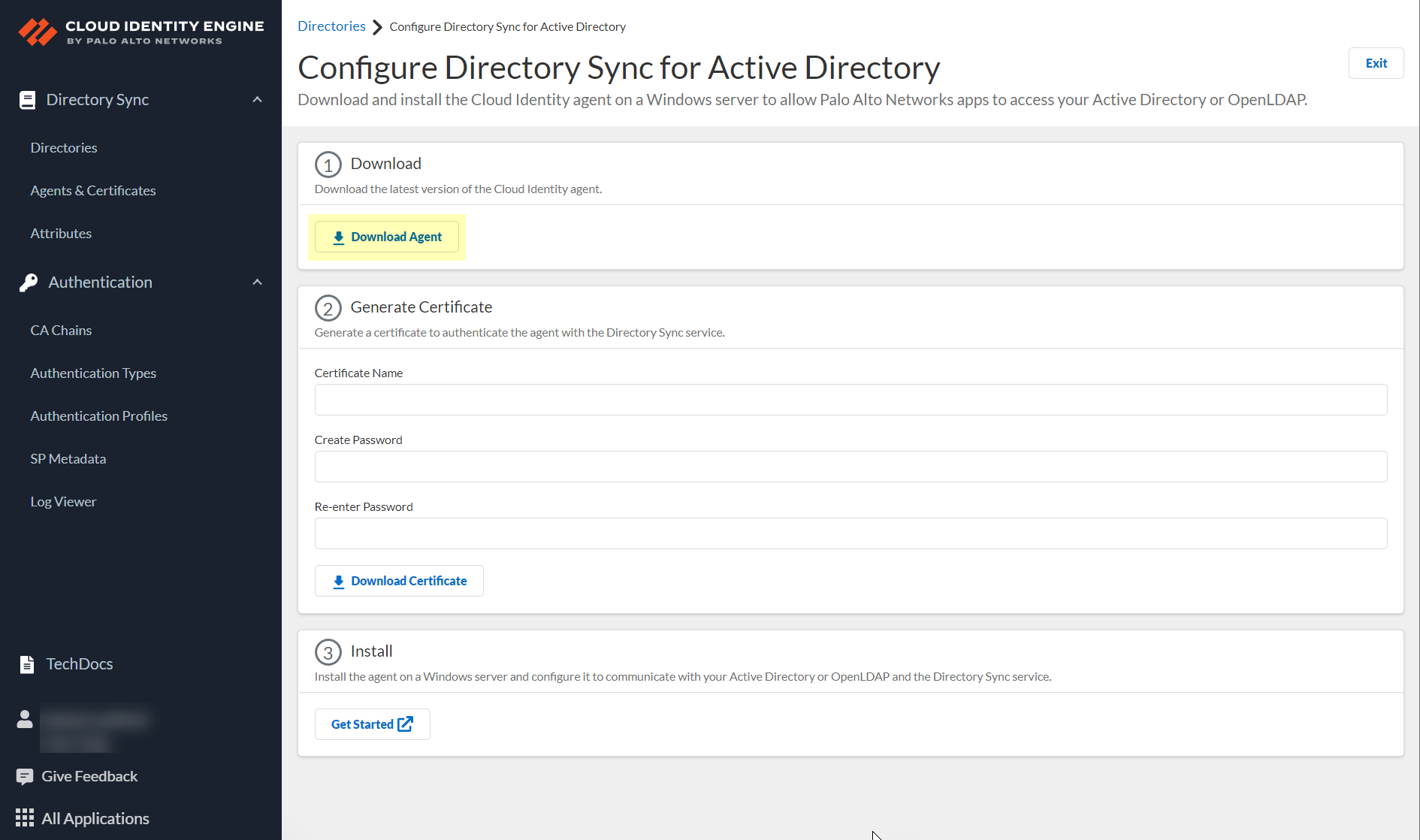Install the Cloud Identity Agent
Table of Contents
Expand all | Collapse all
-
- Cloud Identity Engine Attributes
- Collect Custom Attributes with the Cloud Identity Engine
- View Directory Data
- Cloud Identity Engine User Context
- Create a Cloud Dynamic User Group
- Configure Third-Party Device-ID
- Configure an IP Tag Cloud Connection
- View Mappings and Tags
- Configure Dynamic Privilege Access in the Cloud Identity Engine
- Send Cortex XDR Risk Signals to Okta
- Configure SSF Okta Receiver as a Risk Connection
- Configure the Secrets Vault
-
- Set Up Password Authentication
-
- Configure Azure as an IdP in the Cloud Identity Engine
- Configure Okta as an IdP in the Cloud Identity Engine
- Configure PingOne as an IdP in the Cloud Identity Engine
- Configure PingFederate as an IdP in the Cloud Identity Engine
- Configure Google as an IdP in the Cloud Identity Engine
- Configure a SAML 2.0-Compliant IdP in the Cloud Identity Engine
- Set Up a Client Certificate
- Configure an OIDC Authentication Type
- Set Up an Authentication Profile
- Configure Cloud Identity Engine Authentication on the Firewall or Panorama
- Configure the Cloud Identity Engine as a Mapping Source on the Firewall or Panorama
- Configure Dynamic Privilege Access in the Cloud Identity Engine
- Get Help
Install the Cloud Identity Agent
Learn how to download the Cloud Identity agent and install
it on a supported Active Directory or OpenLDAP-based directory server.
Before installing the Cloud Identity agent,
verify that the time on the agent host is correct and synced to
a valid NTP server. If the time on the server host is incorrect,
the Cloud Identity Engine may not be able to sync your directory
attributes successfully.
After you activate your Cloud Identity Engine
tenant, download the Cloud Identity agent from the Cloud Identity Engine app on the
hub and install it on a supported directory server. Palo Alto Networks strongly
recommends using TLS 1.3. If TLS 1.2 is not already enabled on the Windows server that will
host the agent, install the update to enable TLS 1.2 before you install the agent.
Because the User-ID agent and the
Cloud Identity agent require the same port, you must use a dedicated
host for each agent type. Do not install both agent types on the
same host.
- Log in to the hub and select the Cloud Identity Engine app.Select Directories then click Add New Directory.
![]() Set Up an On-Premises Directory.
Set Up an On-Premises Directory.![]() Click Download Agent.
Click Download Agent.![]() When the download is complete, open the DaInstall.msi installation file for the agent on the Windows server where you plan to install the agent.For a list of supported servers, see the Cloud Identity Engine system requirements.If you are also using the Terminal Server (TS) agent, we recommend that you do not install the Cloud Identity agent on the same host as the TS agent. If you must install both agents on the same host, you must change the default listening port on the TS agent.Follow the prompts in the installation wizard to install the agent.Navigate to the location of the Cloud Identity agent.The default location is C:\Program Files (x86)\Palo Alto Networks\Cloud Identity Agent\.Double-click the CloudIdAgentController.exe file to launch the Cloud Identity agent.Starting the agent also starts the Cloud Identity Engine, which runs in the background on the server hosting the Cloud Identity agent until you stop the connection to the Cloud Identity Engine.
When the download is complete, open the DaInstall.msi installation file for the agent on the Windows server where you plan to install the agent.For a list of supported servers, see the Cloud Identity Engine system requirements.If you are also using the Terminal Server (TS) agent, we recommend that you do not install the Cloud Identity agent on the same host as the TS agent. If you must install both agents on the same host, you must change the default listening port on the TS agent.Follow the prompts in the installation wizard to install the agent.Navigate to the location of the Cloud Identity agent.The default location is C:\Program Files (x86)\Palo Alto Networks\Cloud Identity Agent\.Double-click the CloudIdAgentController.exe file to launch the Cloud Identity agent.Starting the agent also starts the Cloud Identity Engine, which runs in the background on the server hosting the Cloud Identity agent until you stop the connection to the Cloud Identity Engine.Next Steps
- After you have installed the Cloud Identity agent on the host, Configure the Cloud Identity Agent to communicate with both your directory and the Cloud Identity Engine.
- After configuring the agent, make sure to Authenticate the Agent and the Cloud Identity Engine to enable communication between the agent and the Cloud Identity Engine.
- For a comprehensive user identity and authentication solution, learn how to Authenticate Users with the Cloud Identity Engine.



